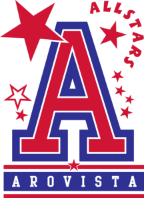Dual Language Immersion Program
Dual Language Immersion is a unique educational model where children learn to think, read, write and communicate naturally in two languages: English and Spanish. Native Spanish and native English speaking students study together, beginning in kindergarten through 6th grade, to be bilingual and biliterate in both languages.
| VISION |
PROGRAM GOALS FOR STUDENTS |
|
The vision of Arovista’s Dual Language Immersion Program is based on the three pillars of a successful, research-based language enrichment program:
|
The goals and objectives of the dual immersion program include the following:
|
90:10 PROGRAM MODEL |
|
The first number ‘90’ refers to the percentage of instructional time initially spent for instruction in the target language (Spanish) in Kindergarten. The second number ‘10’ refers to English. In our 90:10 model, the amount of the target language decreases yearly as English increases until there is a 50:50 balance of the languages in grades fifth and sixth. |
| PROGRAM DISTRIBUTION | ||
| Grade | Instructional Program | Academic Subjects in English |
| K | 90:10 |
|
| 1 | 90:10 |
|
| 2 | 80:20 |
|
| 3 | 70:30 |
|
| 4 | 60:40 |
|
| 5 | 50:50 |
|
| 6 | 50:50 |
|
|
FAQs
|
|
Q. Will all students in the Dual Language Immersion develop high levels of academic proficiency in their first language? All students will develop high levels of listening, speaking, reading, and writing ability in English and Spanish. Neither group of students will have to forego development in the native language as second language proficiency improves.
Q. Are there any requirements to enroll my child in the Dual Language Immersion program at Arovista? Students must enter the Dual Language Immersion program in kindergarten or first grade. The student should be proficient in either English or Spanish. In some cases, a new student who is assessed to be at grade-level in the target language (Spanish) may be enrolled into the DLI beyond 1st grade. Consult the school principal for more information regarding assessment of skills.
Q. What is the Dual Language Immersion program model used at Arovista? Arovista Elementary School offers a 90:10 dual immersion program model. The first number refers to the percentage of instructional time initially spent in the Spanish language in kindergarten. The second number refers to English. Instructional time in the target language decreases yearly as English increases until a 50/50 balance is achieved in grades 5 and 6.
Q. Why start with such young students? Research in the area of language acquisition shows that the early years are best for acquiring language(s) (Riley, 2000).
Q. How are students chosen? Interested students need to apply. Students currently living within the Arovista Elementary School boundary area have priority. Remaining available spaces will be filled first by students residing in the Brea Olinda Unified School District service area then will be opened to out-of-district area students. Families residing outside the Brea Olinda Unified School District boundary area will be responsible for their own transportation.
Q. Will English-speaking students be behind their peers in monolingual classrooms? Studies have shown that in 5 to 6 years, students in dual language classrooms typically out-perform their peers in monolingual classrooms.
Q. Is the dual immersion curriculum the same as that taught in monolingual classrooms? The curriculum is the same taught in all classrooms and at all grade levels.
Q. Will students have the second language skills they need to learn new academic material? Yes! Teachers in the dual immersion classroom K-6, use specific strategies to ensure students acquire both the new language and academic achievement. Some of the DLI methods include the following: • Specially designed academic instruction in Spanish/English (SDAIE) |
